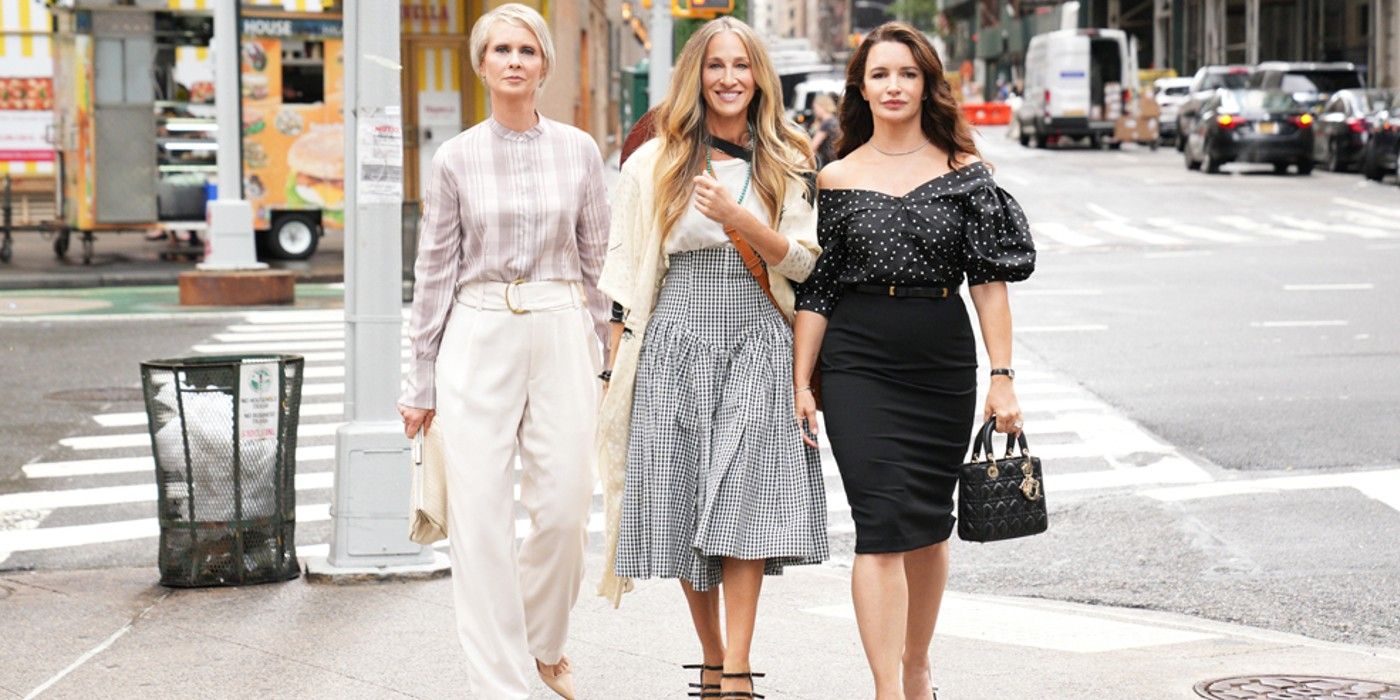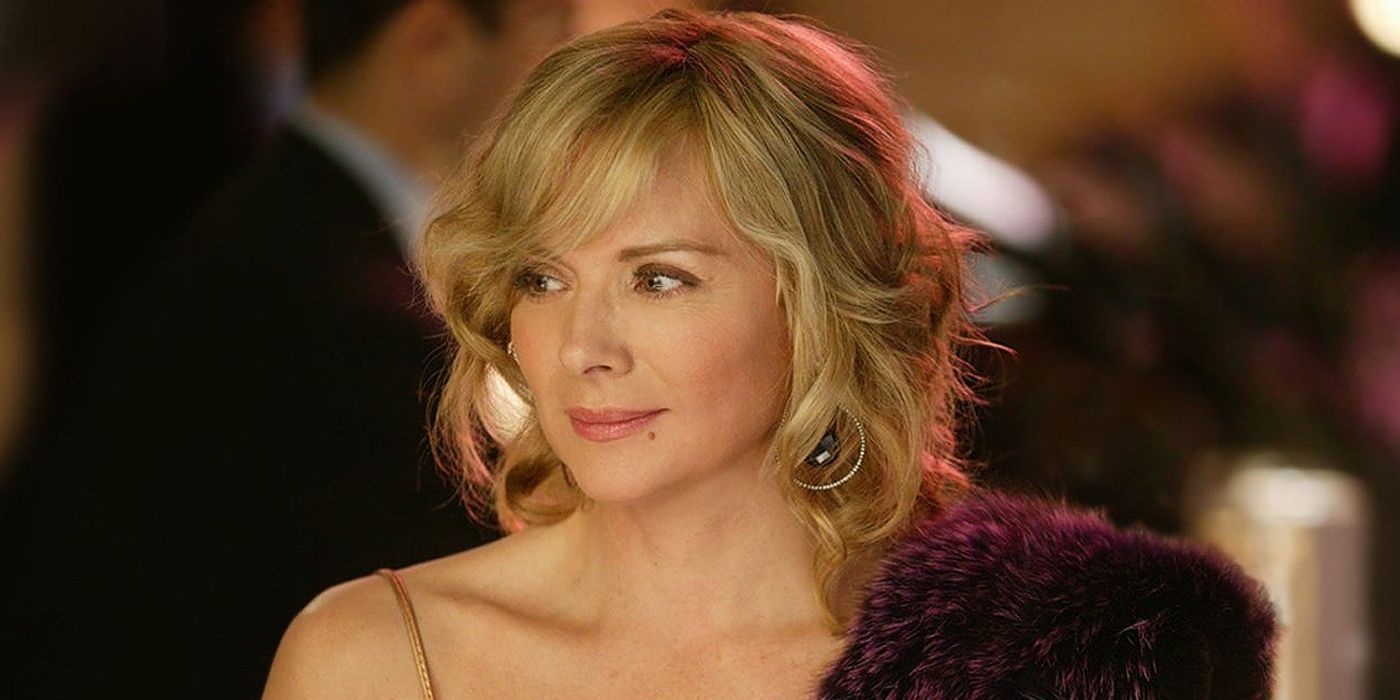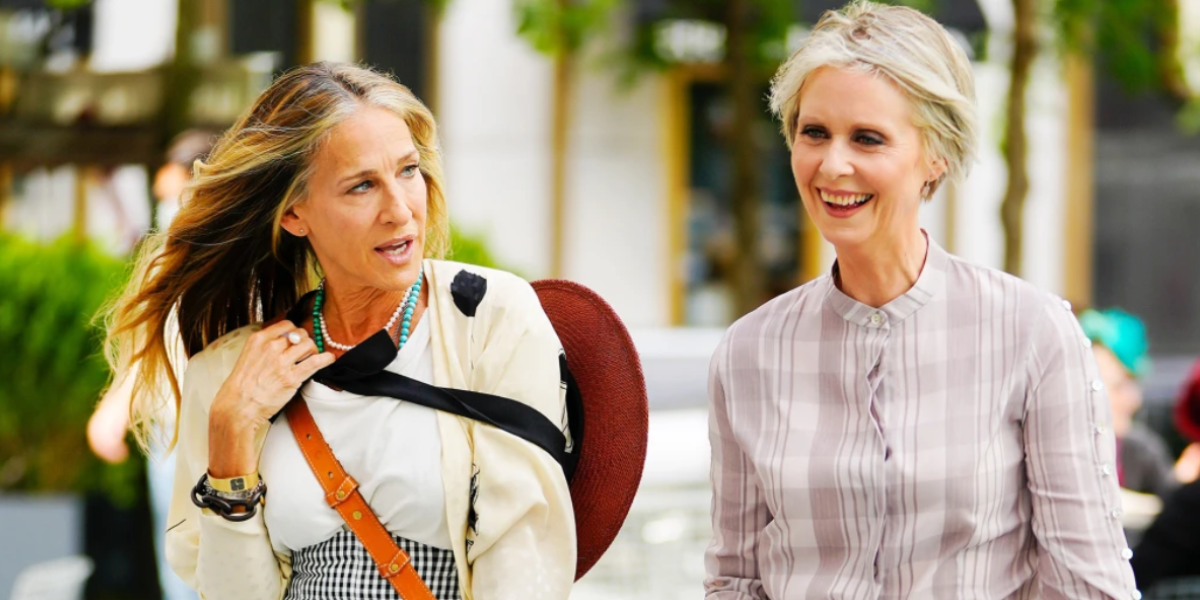WARNING: The following contains major spoilers for "And Just Like That..." available now on HBO Max.
It's almost impossible to do a sequel thirteen years after the last installment in a franchise without making some changes, but And Just Like That... does not treat updating its material like a boundary as much as an opportunity. In integrating new characters and conversations about a far more diverse pool of topics like gender and sexuality, And Just Like That... proves thus far to be a refreshing update to HBO's Sex and the City. However, one of its more fundamental changes may prove controversial. The absence of actress Kim Cattrall in the series is potent as her character, Samantha Jones, is relegated to a minor offscreen role, yet that absence works perfectly for the updated status quo of the show. Samantha was always the most controversial member of the original cast, and by leaving her behind, And Just Like That... is able to ascend to far more progressive heights.
The quartet that made up the original series' main cast simultaneously represented four completely different types of people and four variations on the same person. There was the witty and creative Carrie, the idealistic hyper-planner Charlotte, the neurotic and acerbic Miranda and the raunchy and independent Samantha. Each had their own careers, goals and outlooks on relationships. Yet all were rich, white, straight, middle-aged women in love with the trendy Manhattan lifestyle that defined the original series. In introducing new perspectives and characters like Che Diaz, Seema Patel, Lisa Todd-Wexley and Nya Wallace, the sequel series expands its view on gender and sexuality like it never before could into a far more progressive age.
That progress would be all the harder if Samantha were still an active presence in the show. As the oldest and most forthright of the original cast, Samantha embodied both the best and the worst of what the original series had to offer. Sex and the City was remarkable for its frank and often crass discussions of sexuality too seldom seen on television in 1998, but over the years, its treatment of individuals outside the experience of privileged, straight, white women aged poorly, and its Samantha's contributions which aged the poorest of all.
Throughout the show, Samantha engaged in repeated expressions of intolerance toward trans characters and characters of color, and that only got worse during repeat viewings of the show. For instance, a Season 3 subplot saw her date a Black music producer exclusively because of his sexual prowess, and she later came into conflict with his sister, who was written to be a stereotypical, angry Black woman. Samantha even changed how she spoke and dressed in a gross display of cultural appropriation and stereotyping.
She would later explore her sexuality with a woman, Maria; however, even there, the depiction was not strong, as it was blunt and simplistic compared to her other relationships. Along with that, it felt like she was using Maria to deal with and understand her own issues regarding her past relations with men. What may have seemed like a brave display of boldness and independence in 1998 transformed over the years into something far less likable or sympathetic, even to those who may have been willing to gloss over the cultural and homophobic insensitivities initially.
The kind of punching down that Samantha would do is not so much refreshingly honest as it is out of touch and entitled. And Just Like That... makes leaps and bounds in making its story more progressive and inclusive, but that would be all the harder to do after so many years where the Samanthas of the world came to be known as Karens.
Relegating Samantha to a smaller role was the right move for the series, even if it was one made out of convenience for Cattrall's refusal to return. Soon into the series, And Just Like That... explains the absence as the result of an interpersonal feud between Samantha and Carrie. Subsequent episodes periodically progress that subplot with deft navigation that treats it more seriously than just a flimsy excuse to write the character out, and the result is that Samantha is given the justice she deserves without actually appearing.
That seems to be for the best. There is much that is refreshing and new about the sequel series while in a lot of ways it retains all the things that were best about the original series. Samantha's absence could have been a death blow to the series, forever feeling like a gap in the cast that it could never recover from. Instead, the HBO series wisely treats it as an opportunity to let new characters step into the absence, and the result is that the franchise can continue forward stronger than ever.



